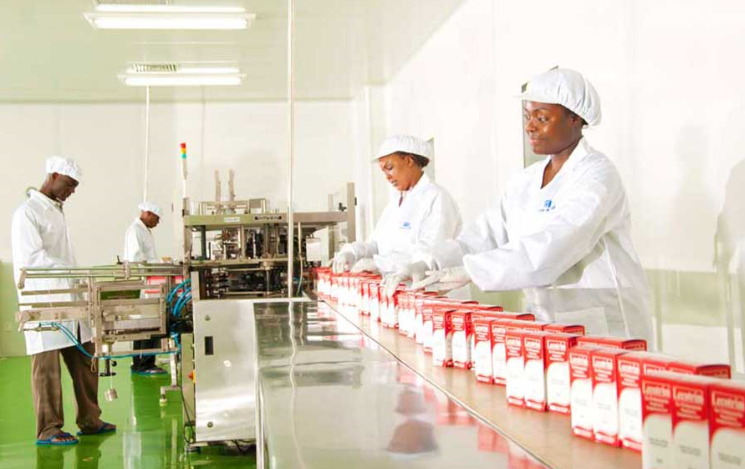Harmonizing Regulatory Systems: Supporting Local Pharmaceutical Manufacturing in Eastern Africa
By Ndinda Kusu and Vivian Rakuomi, MTaPS Kenya
Harmonizing pharmaceutical regulatory systems across a geographic region is strategically important as it will standardize processes and guidelines across countries for critical regulatory functions such as registration of essential medicines, manufacturer inspections, and drug safety surveillance and will increase the region’s capacity to expeditiously and effectively regulate medical products. It is a win-win for local manufacturing and the people with greater access to quality-assured, safe, and effective medicines—a goal of the USAID Medicines, Technologies, and Pharmaceutical Services (MTaPS) Program.
The MTaPS program is promoting a region-driven approach in Africa to boost the regulatory capacity of member countries. The program is assisting the Regional Economic Community blocks of the East African Community (EAC) and Intergovernmental Authority on Development (IGAD) under the African Medicines Regulatory Harmonization Initiative to strengthen the institutional and human resource medicines regulatory capacities of the 11 member countries in the region.
One of the key MTaPS’ approaches in the EAC/IGAD region is to support local manufacturers to better comply with regional and national pharmaceutical regulatory standards and requirements. As part of this effort, MTaPS designed and conducted a survey to identify regulatory gaps that can inform strategies to strengthen the capacity of local manufacturers in the EAC/IGAD region for better compliance with good regulatory practices (GRPs) and regional and national pharmaceutical regulatory requirements.

Manufacturing facility of Laboratory & Allied, Nairobi, Kenya – a survey participant and major player in the local pharmaceutical market in Eastern Africa. Photo Credit: Laboratory & Allied Ltd.
Manufacturers’ Compliance with GRPs: A Survey
MTaPS carried out the survey starting with a literature review of attributes of pharmaceutical regulatory standards and their application in the EAC/IGAD region. The review sought to understand the level of pharmaceutical manufacturing development in the EAC/IGAD region as well as existing policies and regulatory standards, the components of GRPs, and their current implementation and enforcement in the two Regional Economic Communities. Three target audience groups were reached with different questionnaires: policymakers and regulators—mainly National Medicines Regulatory Authorities (NMRAs); local pharmaceutical producers and manufacturers; and pharmaceutical distributors and wholesalers. The information gathered was analyzed and synthesized to develop a report on the level of manufacturers’ compliance to GRPs in the EAC/IGAD region.
Five Key Survey Findings
GRPs encompass a regulatory framework for developing, maintaining, monitoring, and evaluating processes that are to be applied to the development, implementation, and maintenance of quality assurance controls for medical products. The key issues identified in adherence to GRPs centered around the following themes:
1. Lack of incentives in existing policies and the legal and regulatory framework for the development of local manufacturers
2. Weak regulatory enforcement mechanisms, coupled with inadequate governance structures and a lack of clear policies for control of medical products in most surveyed countries
3. Limited technical competencies of some of the NMRAs, pharmaceutical producers, and distributors, especially on regulatory aspects of pharmacovigilance and post-marketing surveillance
4. Insufficient stakeholder engagement by NMRAs to consult and facilitate greater understanding of regulatory requirements for compliance
5. Inadequate level of emergency preparedness and protocols to ensure an uninterrupted supply of quality products during emergencies
Post-Survey Stakeholder Engagement
The survey findings were shared with targeted survey groups through virtual forums organized by MTaPS in collaboration with the IGAD and EAC secretariats in October 2020. The forum for local manufacturers and distributors opened a dialogue on the solutions for regulatory compliance, while the one for the NMRAs explored solutions to promoting greater regulatory compliance and ways of enabling mutual reciprocity among NMRAs and manufacturers in the region.
Way Forward—A Call to Action
Following the survey, MTaPS organized a local manufacturers stakeholder conference on December 3, 2020, to sensitize them to the outcomes of the survey, the importance of regulatory compliance, and the roles and responsibilities of pharmaceutical-sector stakeholders in promoting GRPs. The 38 participants, drawn from key stakeholder groups in the pharmaceutical value chain including the IGAD secretariat, NMRAs from member countries, professional associations, local pharmaceutical manufacturers, distributors, donors, civil society, and policymakers, agreed on a call to action to champion increased compliance to GRPs and keep the distribution chain free from non-compliant products and services:
- Policymakers and NMRAs: Strengthen legal frameworks, policies, enforcement, technical expertise, and stakeholder engagement
- Local manufacturers: Create awareness among staff and customers on regulatory compliance requirements and needs
- Consumers: Engage and encourage reporting medicine safety and quality concerns
- Other stakeholders, including the donor community and associations: Advocate and invest in the safety and quality of medical products, including adherence to GRPs by manufacturers and enforcement by NMRAs.
Countries in sub-Saharan Africa depend on imports for 70 to 90% of their medicine needs. The above steps will help spur the local pharmaceutical manufacturing sector and improve access to safe, effective, quality-assured medical products in the region. However, given the myriad differences across member countries—including levels of regulatory capacity; policies, laws, and regulatory frameworks; languages and religious practices; the needs of the various regional and in-country stakeholders; and technical and financial resource constraints—the efforts and investment from global health stakeholders and countries must be sustained over a period to achieve successful harmonization of regulatory systems in the EAC/IGAD region.